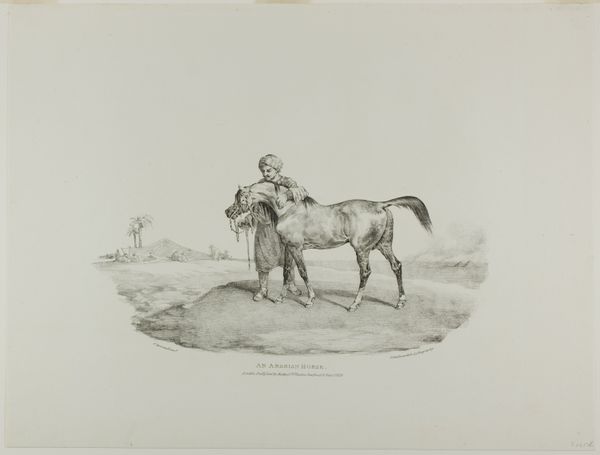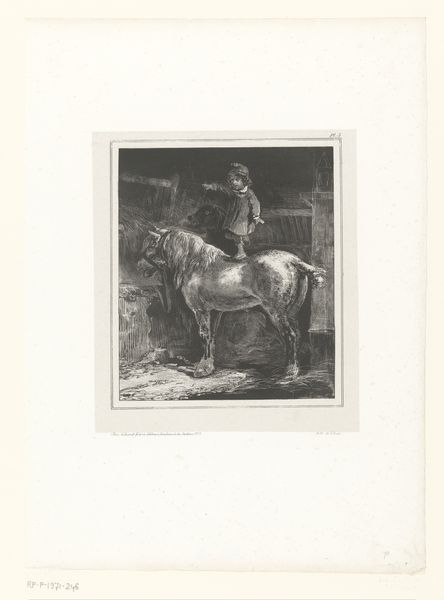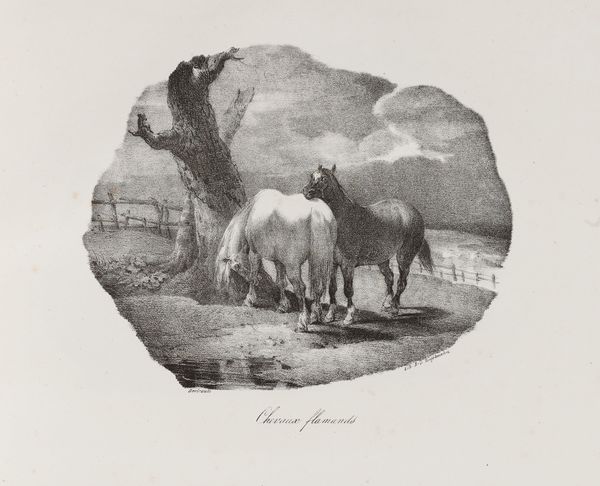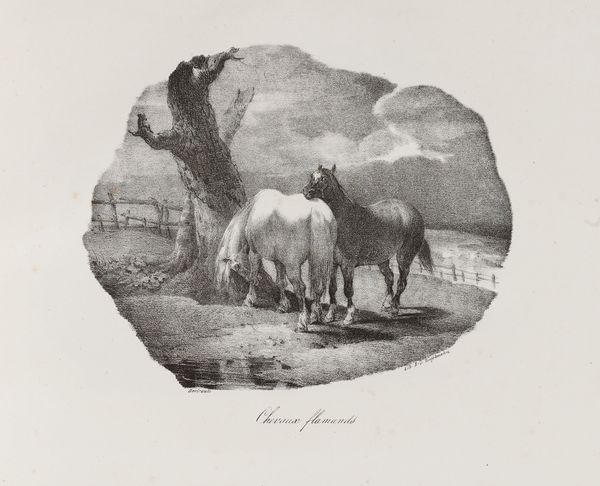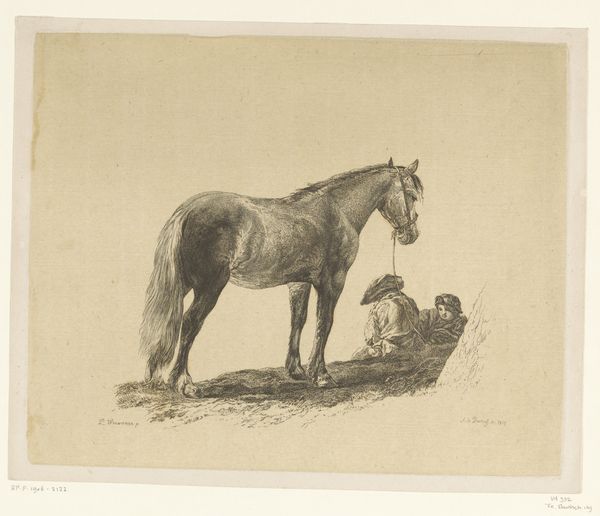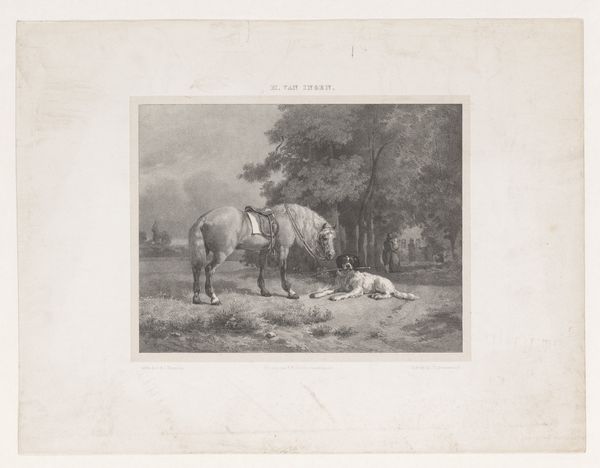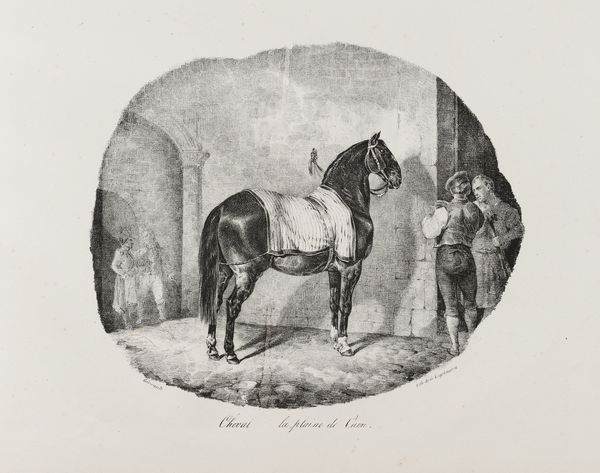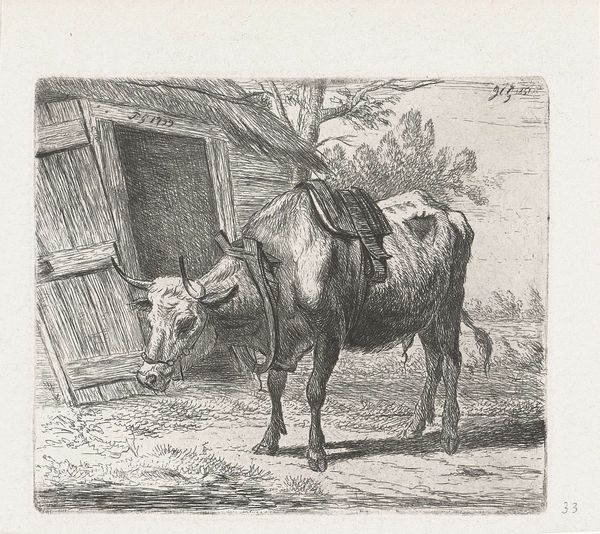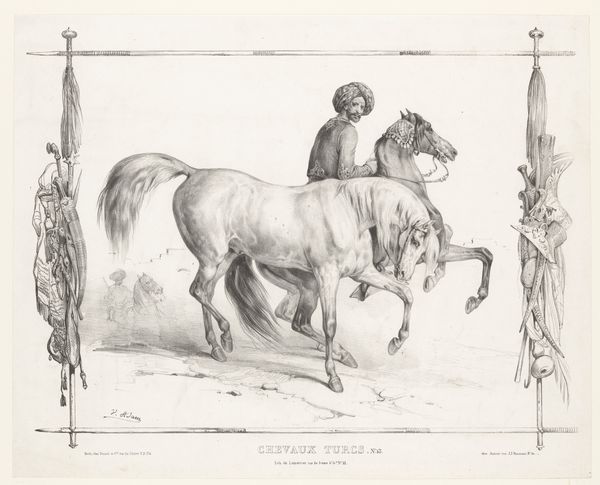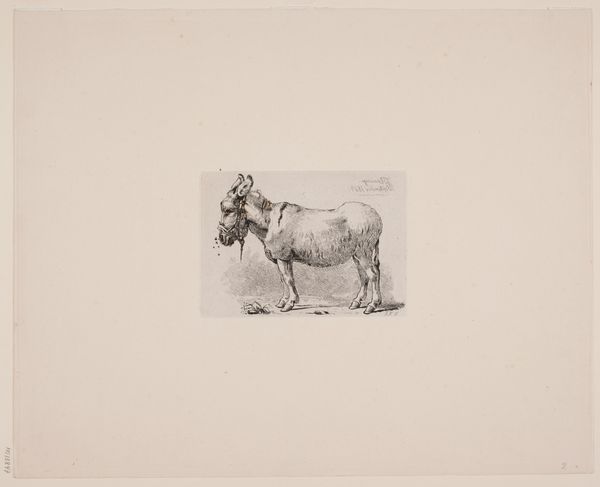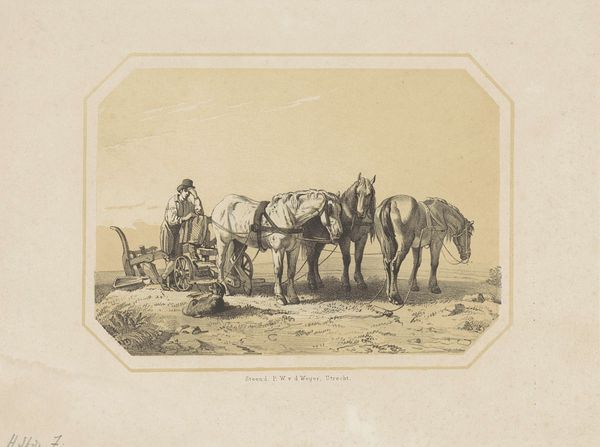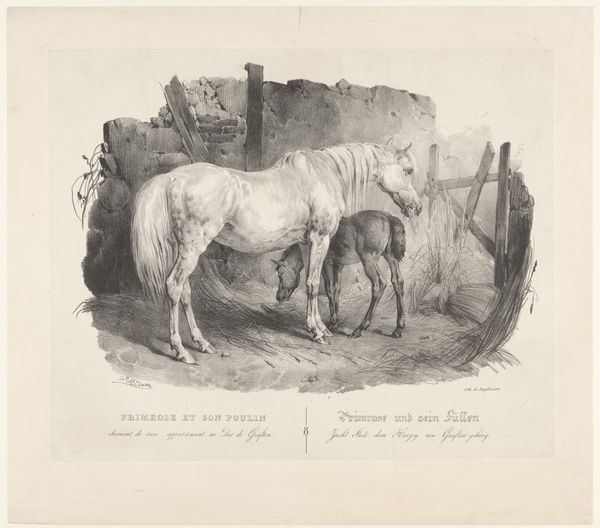
Dimensions: height 461 mm, width 335 mm
Copyright: Rijks Museum: Open Domain
Curator: Looking at this sketch, I feel like I've stumbled upon a secret, almost as if the artist, Gijsbertus Craeyvanger, has shared a private moment from his sketchbook with us. It feels so intimate. Editor: Absolutely. Craeyvanger probably produced this drawing titled "Paard en ruiter," or "Horse and Rider" sometime between 1820 and 1895, likely as a study for a larger painting or simply for his own artistic exploration. Considering Romanticism's influence, we see a fascination with the individual and perhaps the epic narrative embodied in a lone rider. Curator: Exactly. I see it too. There's a certain gravitas in the way the rider gestures, combined with the stoic stance of the horse. The limited use of graphite to render the details against that stark whiteness sort of emphasizes the solitude and also evokes this dreamlike atmosphere, it definitely tugs at your heartstrings. Editor: The choice of medium is crucial here. Graphite allows for those subtle gradations of tone, that gives that smoky, almost ethereal effect. You get a glimpse into a different time through those fine details rendered on that beautiful horse and in the raiment of that rider. This artwork isn’t just about its aesthetic value but its engagement with the broader societal veneration of horses in military exploits. Curator: But even without knowing any historical context, the image speaks of movement frozen, of an adventure paused for a fleeting second. I get the urge to invent his story: Where's he going? What's he thinking? Editor: That's precisely where its power resides. It becomes a canvas for our projections and imagination, linking personal emotion with a reflection of grander socio-historical forces. The Rijksmuseum’s choice to feature this in their collection amplifies this interplay. Curator: Well, I'm just captivated by that soft play of light and shadow – that's just masterful—even in a simple sketch, a testament to art's endless capacity to whisper to us across centuries. Editor: Indeed. It encourages us to consider how individual artistry intersects with public memory and shapes our perceptions of history, an intersection that keeps this artwork a relevant artifact.
Comments
No comments
Be the first to comment and join the conversation on the ultimate creative platform.
